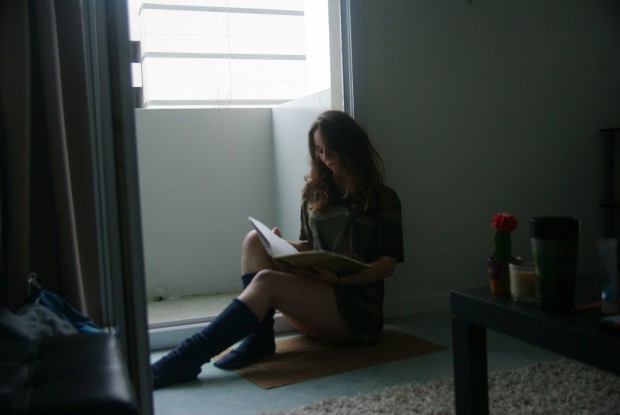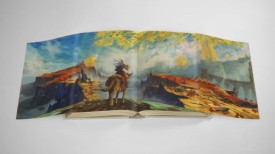The 'Sad Girl Novel' Trend: Exploring the Cultural Fascination With Unhappy Female Protagonists in Literature

Delve into the phenomenon of 'Sad Girl Novels' by exploring the cultural fascination surrounding unhappy female protagonists in literature. (Photo : Unsplash/Mathilde LMD)
Many have lately used the term 'sad girl novel' to refer to books with main characters who seem unhappy and disaffected and struggle with various existential issues. Such characters are normally knowledgeable, critical of society, and sometimes grief-stricken or bored. But why do we associate this literary trend with girls specifically?
The sad girl novel genre features women, usually in their 20s or early 30s, who face dissatisfaction in their working and personal lives. They are depicted as egocentric but riddled with insecurities, symbolizing the 'hot mess' cliche.
The Rise of the 'Sad Girl Novel' Trend
This trend has gained popularity in literature and other media forms, such as television and music, with examples like "Fleabag" and Lana Del Rey's music. The cultural fascination with these characters prompts questions about why young women, particularly those who are White and university-educated, are depicted as being so unhappy.
Sylvia Plath, Otessa Moshfegh, and Sally Rooney are often associated with this particular genre. If you search 'sad girl novels' on Google, you will find numerous articles discussing it. Sometimes, 'sad girl novel' is used interchangeably with 'cool girl novel,' another somewhat dubious term that seems to critique women for dressing nicely and socializing. According to a New Statesman article, a sad girl novel is characterized by spare prose and silent protagonists.
George Eliot's scathing critique of "Silly Novels by Lady Novelists" in 1856 aimed to eradicate the genre. However, to her dismay, it has resurfaced in a new form in the 21st century. The modern incarnation, known as 'sad girl lit' or millennial fiction, exhibits similar traits identified by Eliot: mistaking vagueness for depth, bombast for eloquence, and affectation for originality.
These novels often patronize their audience while being lauded by critics, echoing the inflated praise of their predecessors. In contrast to the romantic literature prevalent during Eliot's time, contemporary sad girl novels prominently showcase protagonists who are depressed and alienated, exerting a significant influence on the literary landscape.
From Eliza Clark's "Boy Parts" to Ottessa Moshfegh's "My Year of Rest and Relaxation," these works mark a notable shift away from the light-hearted tone of earlier genres, marking the advent of a new era in literary movements.
Debates on Representation, Validity, and Societal Impact
The rise of sad girl novels has instigated a multitude of conversations surrounding the depiction of women's experiences in literature, mainly centering on the supposed saturation of themes like inequality, racism, and drug addiction in narratives by female writers. Some critics alleged that such novels trivialize complicated issues and are shallow. In contrast, others find it pertinent to examine themes of melancholy and dissolution, especially among the privileged young White middle-class protagonists.
Critics argued that the term 'sad girl novel' fails to capture the complexity of women's experiences and neglects the vast array of themes explored in their writings. They also questioned how trauma is portrayed and expressed concern about the marginalization of women's voices and narratives. Some contended that labeling these works as 'sad girl literature' perpetuates stereotypes and undermines the value of women's storytelling.
Despite the increasing number of novels authored by women and the high readership among females, literature by and about women still struggles to receive the same recognition as other genres. Women's novels are often dismissed as trivial or uninteresting, and they tend to receive lower ratings on platforms like Goodreads than those penned by men.
The prevalence of these novels in modern literature reflects broader societal challenges, such as the sense of isolation and discontentment prevalent in late capitalist societies. Some interpret these works as resistance against societal norms and expectations, challenging the conventional notion that happiness should be the ultimate objective.
RELATED ARTICLE: The Impact of BookTok Influencers: A Reading Revolution or Cause for Concern?
© 2023 Books & Review All rights reserved.
Popular Now
1
Books to Read After 'Fourth Wing': Top Picks for Fantasy and Romantasy Fans

2
‘The Secret Public’ by Jon Savage Book Review: An Insightful Look Into the LGBTQ Influence

3
Stephanie Regalado's 'If They Only Knew' Column Is Now A Book, Unleashing 60 Anonymous True Stories to Empower Women

4
'No Wire Hangers' Scene That Almost Did Not Happen: New Book Reveals Faye Dunaway's Struggles

5
Rare First Edition of Aphra Behn's Novel 'Oroonoko' Discovered in Kent: A Historic Literary Find

Latest Stories
Book Reviews
‘The Secret Public’ by Jon Savage Book Review: An Insightful Look Into the LGBTQ Influence

Book News
Stephanie Regalado's 'If They Only Knew' Column Is Now A Book, Unleashing 60 Anonymous True Stories to Empower Women

Book News
'No Wire Hangers' Scene That Almost Did Not Happen: New Book Reveals Faye Dunaway's Struggles

Book Reviews
‘The Perfect Couple’ by Elin Hilderbrand Book Review: A Captivating Summer Mystery

Book News
New Book ‘The Franchise’ Reveals Penguins President Kyle Dubas’ ‘Biggest Mistake’ as Maple Leafs GM











